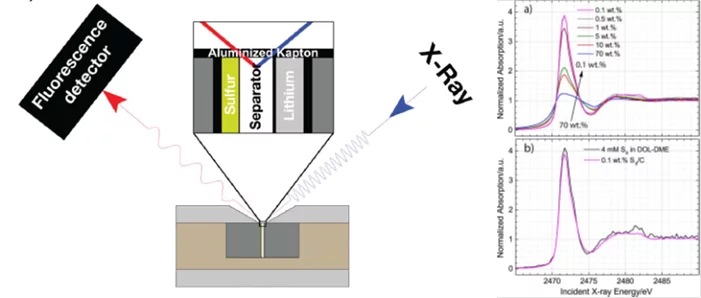One of the technological barriers to electrification of transport is the insufficient storage capacity of the Li-ion batteries on which the current electric cars are based. The lithium-sulfur (Li-S) battery is an advanced technology whose successful commercialization can lead to significant gains in the storage capacity of batteries and promote wide-spread adoption of electric vehicles. Recently, important Li-S intermediates, including polysulfides, S3-, and Li2S, have been shown to present unique X-ray absorption near edge structure (XANES) features at the sulfur K-edge. As a result, a combination of XANES characterization with electrochemistry has the potential to contribute to the understanding of Li-S chemistry. In this study, we present an operando XANES cell design, benchmark its electrochemical and spectroscopic performance, and use it to track reaction intermediates during the discharge of the battery. In particular, by employing electrolyte solvents with either a high or a low dielectric constant, we investigate the influence of the solvent on the conversion of polysulfide species to Li2S. Our results reveal that Li2S is already formed after ∼25–30% discharge in both types of electrolyte solvents, but that further conversion of polysulfides to Li2S proceeds more rapidly in a solvent with a low dielectric constant.
Original Publication
Operando Characterization of Intermediates Produced in a Lithium-Sulfur BatteryYelena Gorlin, Armin Siebel, Michele Piana, Thomas Huthwelker, Himendra Jha, Georg Monsch, Florian Kraus, Hubert A. Gasteiger and Moniek Tromp
Journal of the Electrochemical Society, 162 (7) A1146-A1155 (2015)
DOI: 10.1149/2.0081507jes
